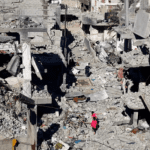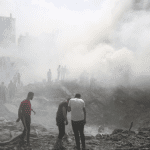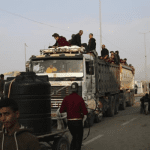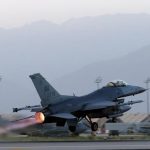Israel, having expanded its attack against Hamas to include more locations where the military had advised Palestinians to seek refuge earlier in the conflict, began heavy strikes across central and southern Gaza overnight and into Wednesday.
As much of northern Gaza was destroyed, residents reported intense bombing in the built-up Bureij refugee camp in the center of Gaza as well as in the southern cities of Khan Younis and Rafah, where tens of thousands had sought safety.
With much of northern Gaza leveled, Palestinians fear a similar fate awaits other areas, including Khan Younis, where Israeli forces launched ground operations in early December, and a cluster of built-up refugee camps in central Gaza where the focus has shifted this week.
The military’s latest evacuation orders cover an area of central Gaza that was home to nearly 90,000 people before the war and now shelters more than 61,000 displaced people, mostly from the north, according to the U.N. humanitarian office.
Israel has said the bombing campaign and ground offensive are necessary to dismantle Hamas and prevent a repeat of its Oct. 7 attack, in which militants broke through Israel’s formidable defenses and killed some 1,200 people – mostly civilians – and abducted around 240. An estimated 129 remain in captivity after dozens were freed.
Despite U.S. calls for Israel to curb civilian casualties and international pressure for a cease-fire in Gaza, Israeli Prime Minister Benjamin Netanyahu said the military was deepening the fighting.
Israel’s offensive is already one of the most devastating military campaigns in recent history.
Over 21,100 Palestinians, most of them women and children, have been killed, including nearly 200 people in the last 24 hours, according to the Hamas-run Health Ministry in Gaza. The count doesn’t differentiate between civilians and combatants.
Some 85% of Gaza’s population of 2.3 million Palestinians have fled their homes, crowding into smaller and smaller areas in recent weeks as the ground offensive has expanded. For many Palestinians, the exodus has echoes of the mass displacement in 1948 that they refer to as the Nakba, or catastrophe.
U.N. officials say a quarter of the territory’s population is starving under Israel’s siege, which allows in a trickle of food, water, fuel, medicine and other supplies. Last week, the U.N. Security Council called for immediately speeding up aid deliveries, but there has been little sign of change.
U.S. calls for Israel to curb civilian casualties, and international pressure for a cease-fire, have also had little effect.
Israel has blamed Hamas for the high civilian death toll in Gaza because the militants operate in dense, residential areas. The military says it has killed thousands of militants, without presenting evidence, and that 164 of its soldiers have been killed since the ground offensive began.














